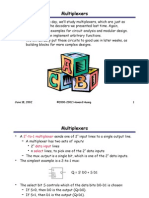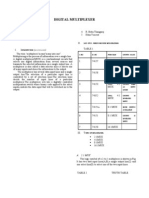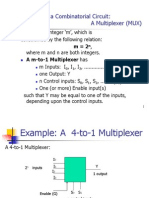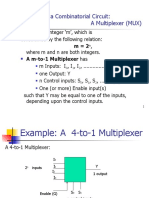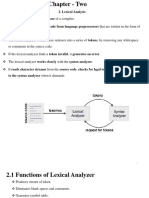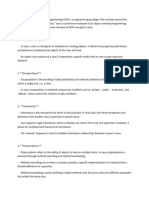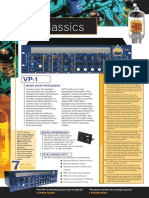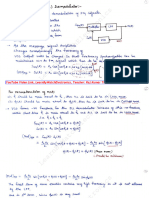0% found this document useful (0 votes)
101 views10 pagesLecture 10
A multiplexer is a circuit with multiple data inputs, select inputs, and one output. It passes the signal from one of the data inputs to the output based on the values of the select inputs. Larger multiplexers can be built from smaller ones. Multiplexers can be used to implement logic functions using their truth tables. Shannon's expansion theorem states that any Boolean function can be written as sums of products, which can be implemented using multiplexers. A demultiplexer is the opposite, taking a single input and placing it on multiple outputs based on the select inputs.
Uploaded by
amanterefe99Copyright
© © All Rights Reserved
We take content rights seriously. If you suspect this is your content, claim it here.
Available Formats
Download as PDF, TXT or read online on Scribd
0% found this document useful (0 votes)
101 views10 pagesLecture 10
A multiplexer is a circuit with multiple data inputs, select inputs, and one output. It passes the signal from one of the data inputs to the output based on the values of the select inputs. Larger multiplexers can be built from smaller ones. Multiplexers can be used to implement logic functions using their truth tables. Shannon's expansion theorem states that any Boolean function can be written as sums of products, which can be implemented using multiplexers. A demultiplexer is the opposite, taking a single input and placing it on multiple outputs based on the select inputs.
Uploaded by
amanterefe99Copyright
© © All Rights Reserved
We take content rights seriously. If you suspect this is your content, claim it here.
Available Formats
Download as PDF, TXT or read online on Scribd
/ 10























